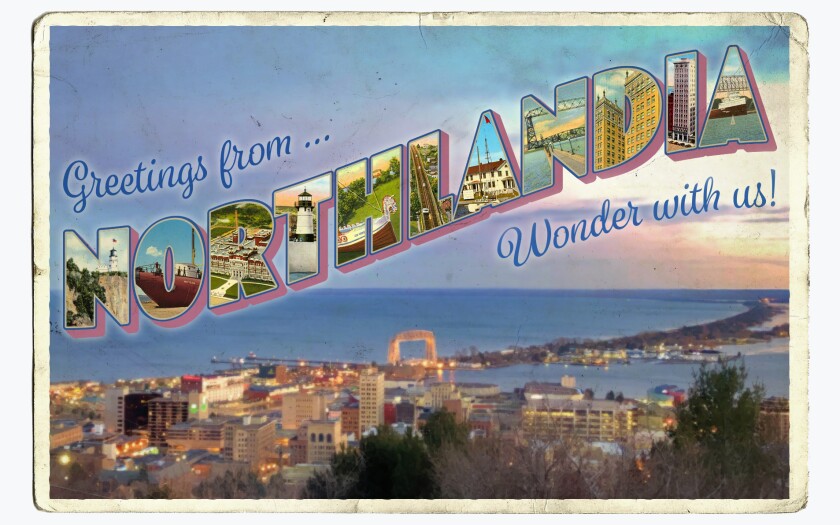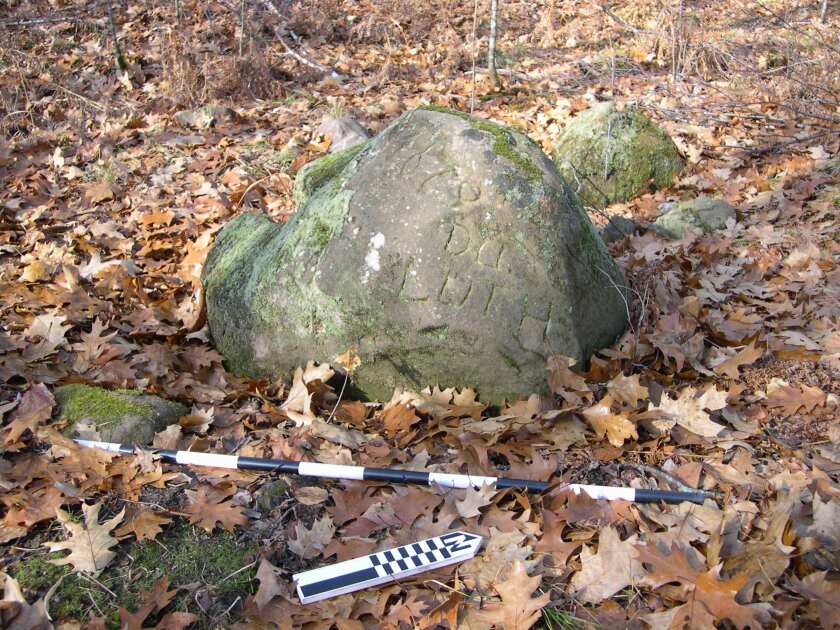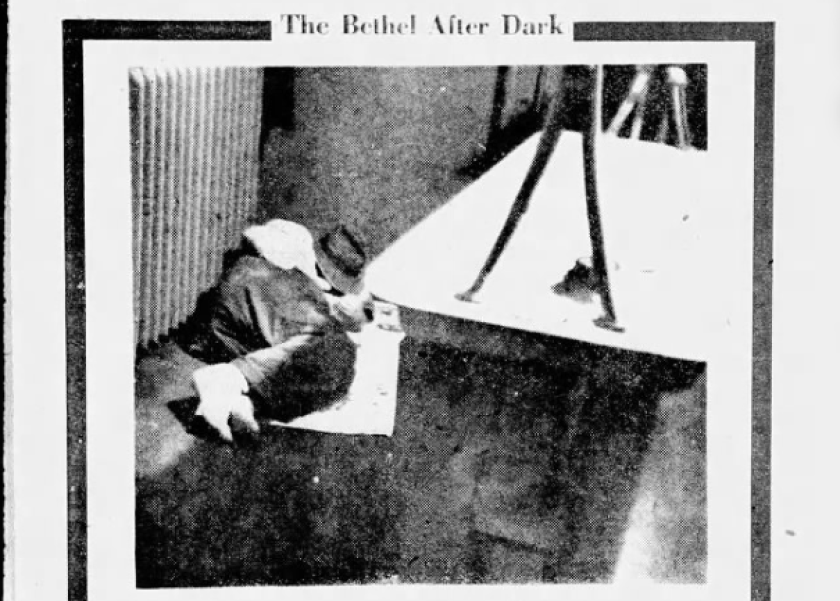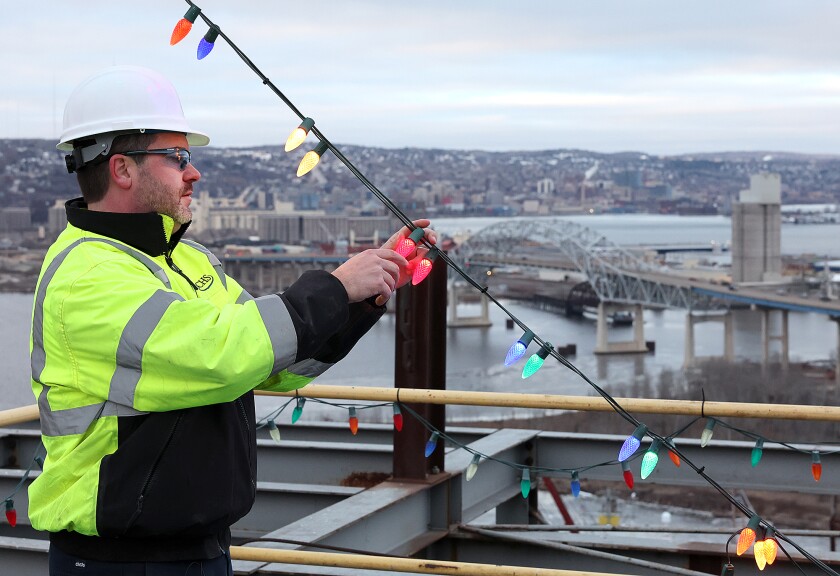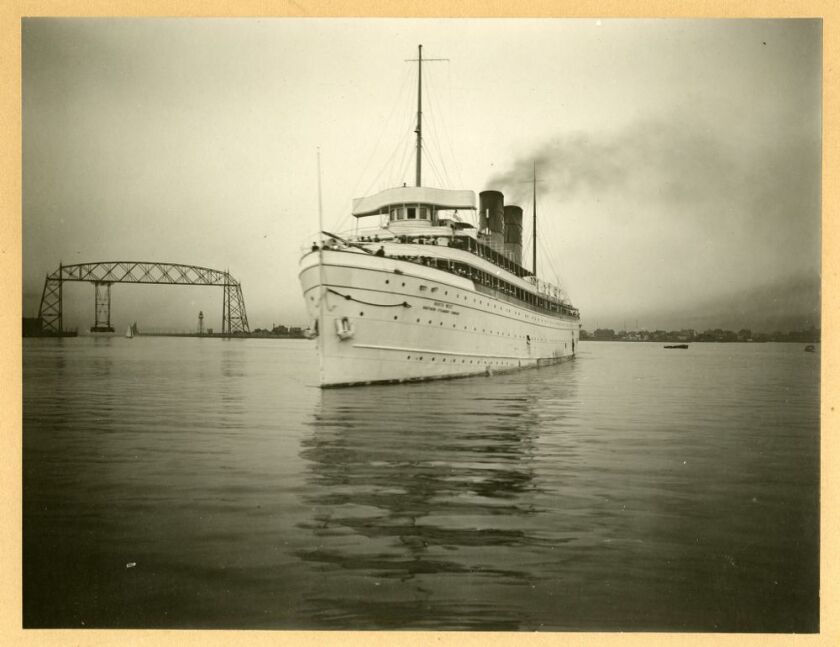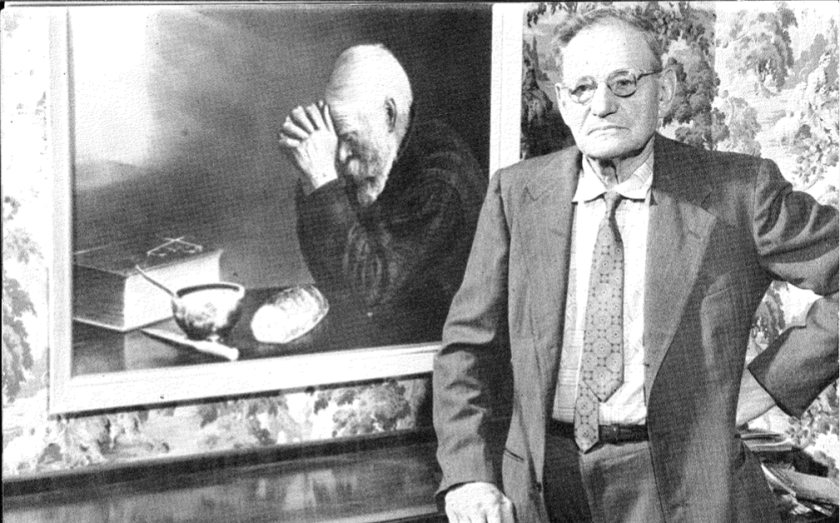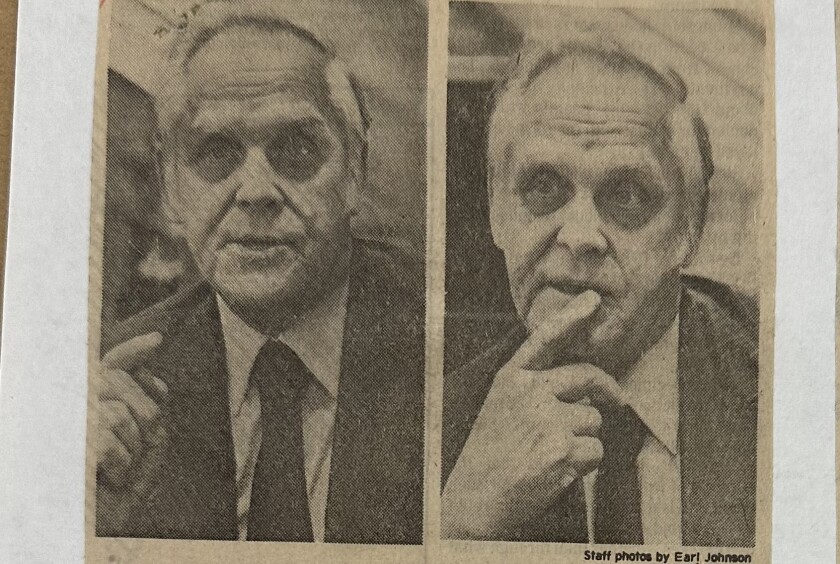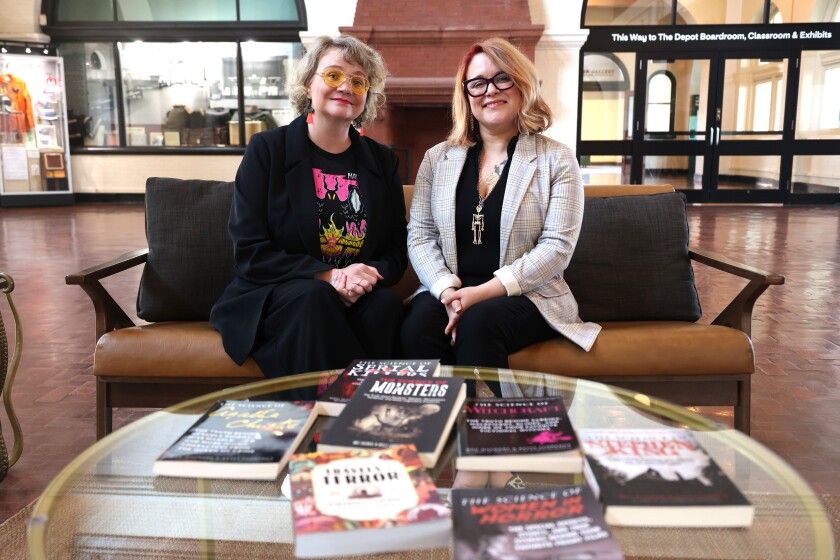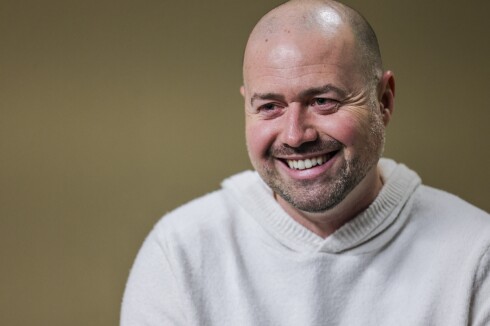DULUTH — While on the moon, Apollo 11 astronauts Neil Armstrong and Buzz Aldrin filled a container with rock samples and poured loose soil into the voids around rocks.
When an analysis of that loose soil, known as Sample 10084, was published, it caught the attention of the now-late Samuel Goldich, a University of Minnesota professor known for his significant developments in geochemistry.
ADVERTISEMENT
Goldich found the lunar material had striking similarities to a sample he took from a 50-meter-long basalt band stretching across the face of West Duluth’s abandoned quarry, now Quarry Park. Like the moon, the quarry’s basalt was high in ilmenite, a mineral containing titanium, iron and oxygen.
“So this is something that Goldich had noticed and put on a note, left it in his desk drawer, and when he saw this analysis from the lunar samples, he realized how they were very similar in the major elements,” said geologist Paul Weiblen, a University of Minnesota professor emeritus.
Goldich published the comparison in a journal, Science, in 1971.
Then, in the mid- to late 1980s, Weiblen, now 97 and living in Falcon Heights, Minnesota, began working on a NASA-sponsored program study returning to the moon and colonizing it.
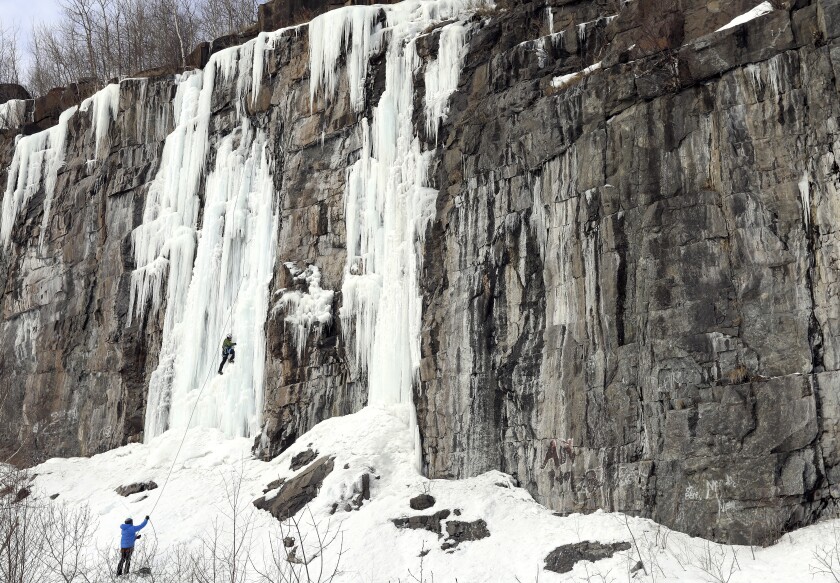
“Someone came up with the idea that you could possibly take small amounts of water to the moon and use some seeds and start a small-sized farm in a vacuum chamber on the moon to grow tomatoes and so forth,” Weiblen said. “So to test that, the idea was to use this rock that was very similar to that on the moon in the quarry there.”
Weiblen extracted about a ton of basalt from the quarry and developed a process to grind it into fine sand-like grains resembling lunar regolith — the dust or soil on the moon's surface. But the Apollo 11 sample had glass in it, and the Quarry Park sample didn’t. So he and others figured out how to gain those by hitting the sample with a plasma reactor, according to a 1990 article in Engineering, Construction, and Operations in Space II journal.
Minnesota Lunar Simulant, or MLS-1, was born. And it was the first lunar simulant ever developed, said John Gruener, who oversees the Simulant Development Lab at NASA’s Johnson Space Center in Houston, Texas.
ADVERTISEMENT
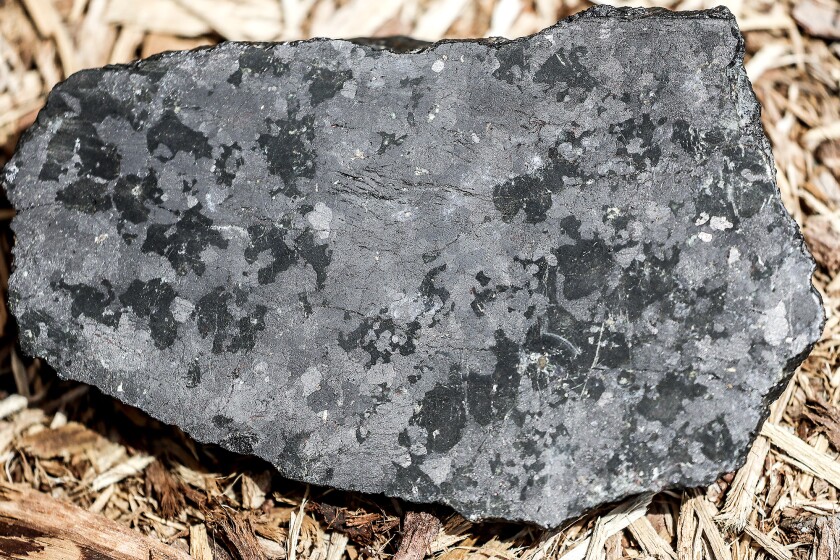
Demand was high, Weiblen recalled.
Batches of MLS-1 were sent to Japan and even to Disney World’s Epcot in Florida, both for farming experiments, Weiblen said.
The need for lunar simulants would only grow.
In 1989, on the 20th anniversary of the first moon landing, George H. W. Bush launched an initiative to study long-term stays on the moon, which could be a pit stop for crews headed to Mars.
Gruener said everything, from seals to hinges and latches, would need to be tested to see how they would hold up in a lunar environment.
“People realized that if we’re going to be designing things to operate on the moon, in that gritty, dusty environment on the moon, we probably need to make what they called lunar soil simulants to replicate what was found on the moon,” Gruener said.
After all, there was a finite supply of real lunar material. Only 840 pounds were brought back by the six Apollo missions that landed on the moon, Gruener said.
ADVERTISEMENT
Besides growing plants, Gruener said some early research explored hitting lunar simulants with hot hydrogen gas to break the oxygen off the iron and titanium in ilmenite and potentially use it as an air source in future moon missions.
“So there’s a lot of oxygen on the moon,” Gruener said. “It’s just tied up in rocks.”
It didn’t take long for the 1 ton of MLS-1 to run out.
A 2007 paper in the Journal of Geophysical Research said plans were made to quarry more MLS-1, but that hasn’t happened.
City spokesperson Kelli Latuska said no one at City Hall knew firsthand about the quarry supplying moon rock simulants.
Soon after MLS-1 was established, other simulants were developed and sourced from basalt in Arizona and other locations.
Even the University of Minnesota’s Natural Resources Research Institute’s laboratory in Coleraine, which is often used to study milling and processing in the iron ore mining industry, is developing ways to grind anorthite and basaltic scoria from New Mexico into lunar simulant for Michigan Technological University’s Planetary Surface Technology Development Lab.
ADVERTISEMENT
Now NASA relies on companies to source and manufacture simulants, and the agency is primarily interested in anorthosite.
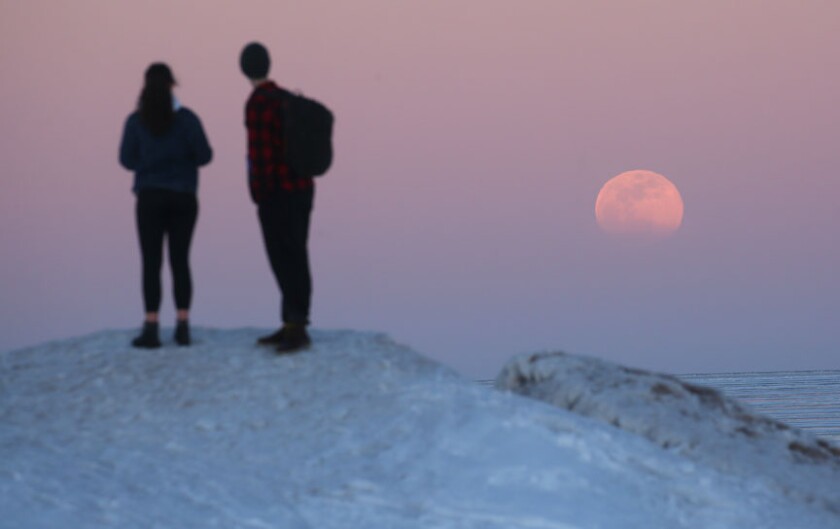
NASA’s planned Artemis missions, which could land humans on the moon in 2026 for the first time since 1972, will aim for the moon’s south pole, which is made up of anorthosite, not ilmenite.
Coincidentally, anorthosite makes up much of the lighter-colored rocks on the quarry’s wall, just below the basalt band used for MLS-1. But the anorthosite in Duluth has not been used for lunar simulants.
“It’s really neat,” Gruener said of the quarry wall. “Right there on that rock wall, you have both the bright areas of the moon and the dark areas of the moon represented.”
The rock found in the quarry formed when the Midcontinent Rift 1.1 billion years ago tried to pull North America apart, sending lava and magma up and leaving behind deposits of copper, nickel, ilmenite and other minerals across in what’s called the Duluth Complex in Northeastern Minnesota.
The 100-foot-high and 1,000-foot-long quarry wall was exposed by the Duluth Crushed Stone Co., which began blasting into the side of the hillside on the north end of 59th Avenue West, just below Skyline Parkway, in 1903. Much of the crushed rock was used in area building materials and roadways.
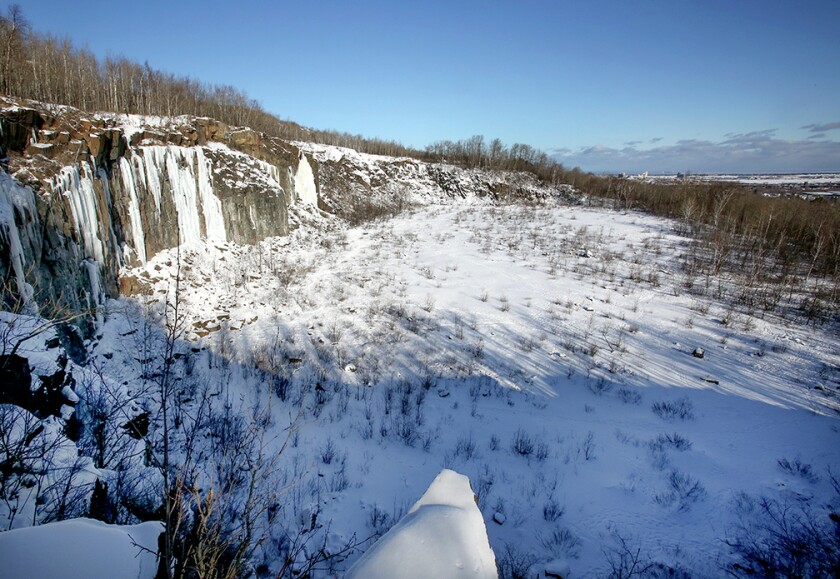
It's informally known as Casket Quarry because of several concrete and metal burial vaults near the entrance. Ice on the quarry walls began attracting ice climbers in the 1970s, according to the Duluth Climbers Coalition.
ADVERTISEMENT
It was established as a 30-acre city park in 2016. Today, the park capitalizes on ice climbing and is surrounded by disk golf and trails.
However, besides a paragraph in the park’s 2015 mini master plan and brief references in scientific studies and reports, the quarry’s contribution to lunar science and its connection to Apollo 11 are not widely recognized.
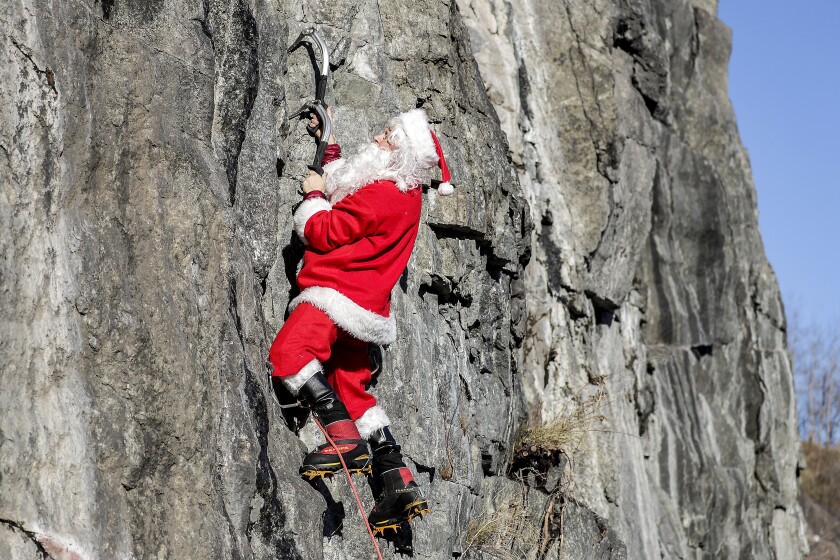
But Weiblen has imagined bigger plans. He suggested a moon-like environment built in the quarry and named after Robert R. Gilruth, a Nashwauk native and 1931 Duluth Central High School graduate who served as director of what became Johnson Space Center during the Gemini, Mercury and Apollo missions.
“I often thought that quarry exposure could be converted into a tourist attraction in Duluth,” Weiblen said. “If you quarried back into it, you could have something that represents … living in a lunar environment.”
